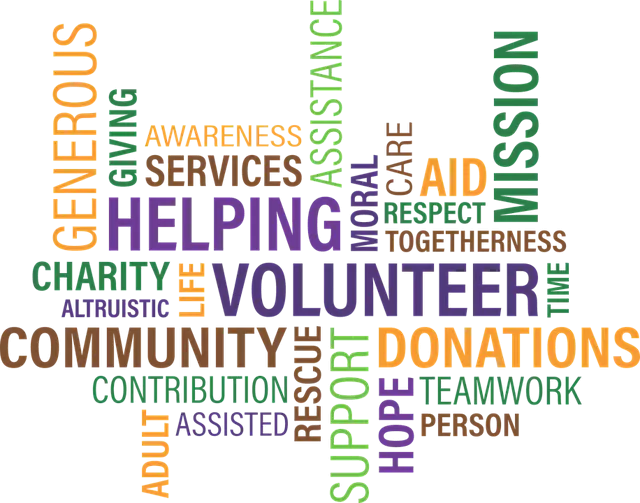Nonprofit Company: Professional Assistance for Your Goal and Neighborhood Effect
Nonprofit Company: Professional Assistance for Your Goal and Neighborhood Effect
Blog Article
Discovering the Diverse Functions and Obligations of a Nonprofit Firm in Addressing Social Issues and Supporting Adjustment
Not-for-profit companies act as crucial representatives of modification within culture, taking on a myriad of social concerns via diverse approaches. Their responsibilities expand beyond plain service provision; they take part in advocacy, resource mobilization, and neighborhood outreach, commonly working as a bridge between necessary services and marginalized populations. By cultivating cooperations and using culturally relevant techniques, these organizations resolve the source of social difficulties. Yet, the complexities of their roles elevate crucial questions concerning effectiveness and sustainability. What are the effects of these diverse functions on long-term area impact?
Recognizing Nonprofit Company Roles
The efficiency of not-for-profit firms pivots on a clear understanding of their varied roles within culture. These organizations serve as important middlemans between the public, private, and governmental sectors, resolving different social problems and advocating for modification. Not-for-profit firms often function as service carriers, supplying essential programs and resources to underserved populaces. This duty is important in filling up spaces that may exist in public solutions, making sure that vulnerable teams have access to necessary support.
Furthermore, nonprofits play a necessary function in advocacy, increasing recognition and affecting policy decisions that impact their areas. By engaging in research study and public education and learning, these companies aid form public discussion and advertise notified decision-making - nonprofit agency. They also function as platforms for volunteerism, activating community members to contribute their time and skills toward collective goals
In addition, nonprofit firms often function as conveners, bringing together varied stakeholders to foster partnership and collective influence. This joint technique boosts their capacity to resolve complex social issues efficiently. Recognizing these multifaceted functions is important for maximizing the capacity of not-for-profit companies in creating sustainable social adjustment and enhancing total area health.
Community Involvement and Outreach
Efficient neighborhood involvement and outreach are fundamental parts of not-for-profit firms' techniques to cultivate links and construct trust within the communities they offer. These efforts concentrate on recognizing area needs, advertising understanding of available resources, and encouraging involvement in programs created to deal with social problems. Nonprofit companies use a selection of methods to engage with neighborhood participants, such as workshops, educational sessions, and collaborative occasions.
Outreach initiatives serve to enhance partnerships with diverse populaces, especially marginalized groups that might encounter barriers to gain access to. By using culturally appropriate interaction approaches and leveraging local collaborations, nonprofits can enhance their presence and show their dedication to area empowerment. This approach not just grows a feeling of belonging however also raises the likelihood of continual involvement.
Additionally, efficient neighborhood engagement exceeds plain involvement; it includes actively listening to area participants' responses and integrating their understandings into program growth. This joint procedure guarantees that the services provided are responsive, relevant, and tailored to the unique challenges faced by the community. Ultimately, fostering strong connections via engagement and outreach can bring about more impactful treatments and a higher collective initiative towards promoting positive social change.
Campaigning For and Policy Influence
Campaigning for functions as a vital mechanism for not-for-profit firms to affect public law and drive systemic adjustment. By leveraging their experience and neighborhood understandings, these companies can effectively stand for marginalized populaces and address pushing social problems. Nonprofits involve in campaigning for through different strategies, including public understanding projects, grassroots mobilization, coalition structure, and straight lobbying of policymakers.
With these initiatives, nonprofit agencies intend to form legislation and plan frameworks that line up with their goal and the needs of the areas they serve. They conduct research study, collect information, and share engaging narratives to highlight the urgency of specific concerns, making certain that decision-makers are informed and encouraged to act. This procedure not only enhances the voices of those impacted by social injustices but also cultivates a more equitable and inclusive policymaking setting.
Furthermore, advocacy efforts commonly look for to develop long-term architectural changes, attending to root triggers rather than just reducing signs. By prioritizing policy influence, nonprofit companies add to a more comprehensive understanding of social obstacles and advertise solutions that can bring about sustainable renovations in social health. Inevitably, campaigning for is essential to the transformative function nonprofits play in creating a just and fair culture.
Fundraising and Source Administration
Not-for-profit firms rely on durable fundraising and resource management methods to support their advocacy initiatives and maintain their missions. By employing a multi-faceted technique, nonprofits can reduce the dangers associated with reliance on a single funding source.
Source management is similarly critical, as it involves the tactical allotment of both economic and human sources to make the most of effect. Nonprofits have to develop budget plans that line up with their objectives while guaranteeing openness and liability to stakeholders. This entails routine tracking of expenses and readjusting strategies as required to optimize resource use.

Collaboration and Partnerships
While lots of organizations seek their goals individually, cooperation and partnerships can significantly improve the effectiveness of nonprofit companies. By interacting with other nonprofits, government entities, and economic sector companies, nonprofits can pool resources, share knowledge, and amplify their effect on social problems. Joint efforts typically bring about cutting-edge solutions that may not be attainable individually, leveraging the staminas of each partner to attend to intricate obstacles.

Inevitably, efficient partnership requires clear interaction, shared objectives, and common respect among companions. By welcoming a participating method, nonprofit companies can develop sustainable networks that not only address instant social issues yet additionally add to lasting systemic change, promoting a much more fair culture. Through cooperation, nonprofits pop over here can grow and optimize their possibility for significant impact.
Conclusion
Not-for-profit firms work as vital entities in fostering and addressing social concerns change within communities. Through diverse features such as community engagement, advocacy, and source administration, these companies properly activate resources and assistance for underserved populaces. Their joint initiatives with numerous stakeholders improve the capability to influence public plan and advertise structural modifications. Inevitably, the complex duties of nonprofit companies considerably add to the quest of social justice and the renovation of area well-being.
Comprehending these multifaceted functions is essential for making the most of the capacity of nonprofit firms in producing lasting social modification and enhancing total area well-being.
Efficient area interaction and outreach are essential parts of nonprofit agencies' techniques to build and foster connections trust fund within the communities they offer. By working together with other nonprofits, federal government entities, and personal industry organizations, nonprofits can merge resources, share know-how, and magnify their impact on social problems.Not-for-profit firms serve as essential entities in fostering and addressing social concerns adjustment within areas - nonprofit agency. Ultimately, the complex functions of not-for-profit companies substantially contribute to the pursuit of social justice and the improvement of community health
Report this page